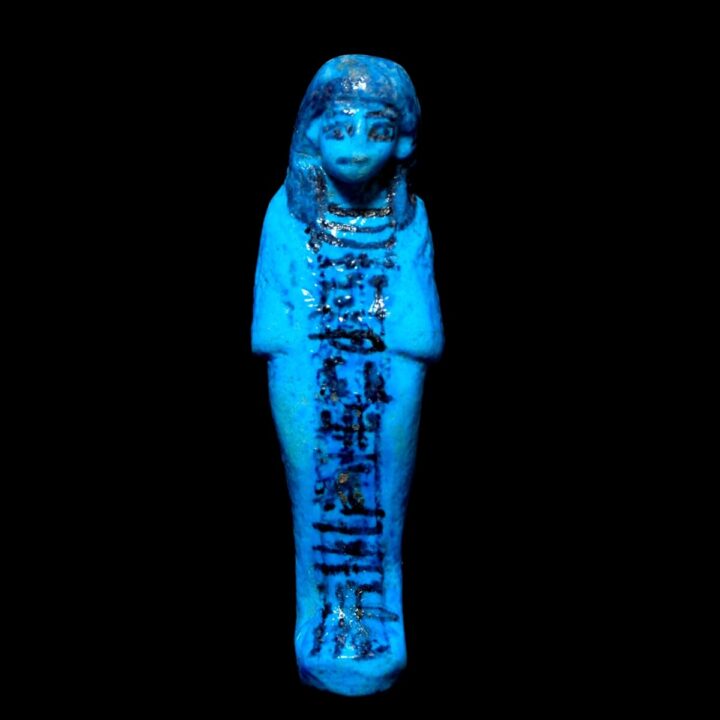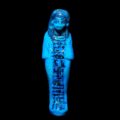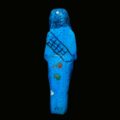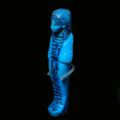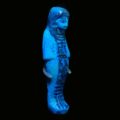Faience Shabti of the Mut Singer Nakht-su-pahem-netjer-tepy
Culture: Egyptian
Period: 3rd Intermediate period, 21st dynasty, 1069-945 B.C.
Material: Faience
Dimensions: 14.2 cm high
Price: Sold
Ref: 1490
Provenance: Private collection of the archaeologist Emil Brugsch (1842-1930) until 1895. Thence collection Colonel Anthony J. Drexel, Jr. (1864-1934), Philadelphia, founder of the Drexel Institute Museum. In 1916 listed in the Minneapolis Institute of Art with the inventory number 16.365. Thence Blumka Gallery, New York, circa 1958. Thence with Superior Galleries, Beverly Hills, California in 1975. On 11 December 2014 with Christie’s in New York with lot number 63. There acquired by the Dr. W. Benson Harer family collection. Thence in a family estate.
Condition: A small spalling of the blue glaze on the back, otherwise very beautifully preserved.
Description: Large, blue glazed shabti in mummiform, mentioning as the owner “the singer of Mut Nakht-su-pahem-netjer-tepy”. The eyes, brows, mouth, three-row collar, diagonally running seed bag on the back and the vertical hieroglyph inscription are applied in black. The tripartite wig, from where the ears are protruding, is also black. The arms are crossed in front of the chest, in the hands the shabti holds the slightly sculpturally indicated hoes. The inscription reaches from the collar to the feet, the translation reads: “Instructions of Osiris, the singer of Mut, Nakht-su-pahem-netjer-tepy, justified.” The shabti is from the property of the German archaeologist Emil Brugsch (1842-1930), who was significantly involved in the recovery of the mummies and art treasures from the cachette from Deir el-Bahari (“Royal Cache”) in 1881. Amongst the discovered mummies was also the one from Ramesses the Great. Furthermore, the shabti was exhibited in the San Bernadino University Art Gallery in 1992 and thence from 1997 to 2011 in the Robert and Frances Fullerton Museum of Art in California. Mounted.



